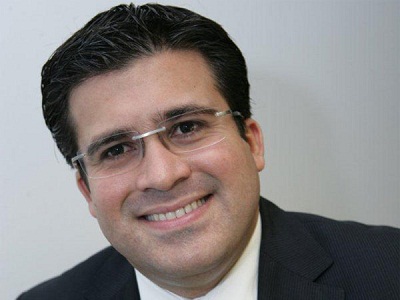The United Nations recognizes December 2 as the International Day for the Abolition of Slavery, which marks the date of the adoption of the United Nations Convention for the Suppression of the Traffic in Persons and of the Exploitation of the Prostitution of Others. According to the agency:
“The focus of this day is on eradicating contemporary forms of slavery, such as trafficking in persons, sexual exploitation, the worst forms of child labour, forced marriage, and the forced recruitment of children for use in armed conflict.”
Though the problem of modern-day slavery is vast (with some estimates as high as 27 million people in slavery today), ICTs have a critical role to play in ending slavery practices. They can be used to monitor and report cases, raise awareness, and help grassroots groups implement anti-slavery activities.
Here is a sampling of some cutting edge ways that groups are using ICTs to fight slavery.
Slavery Footprint
How many slaves work for you? Find out by taking this website and app’s lifestyle survey, which averages how many forced laborers have contributed to making the products you consume, from shoes to electronics. The questionnaire asks about what food you eat, clothes you wear, and your hobbies after investigating what goes into producing around 400 everyday items.
Phone Story
This game for smartphone devices attempts to provoke a critical reflection on its own technological platform. It brings to light that behind many consumer electronics hides the product of a troubling supply chain that stretches across the globe. Phone Story represents this process with four educational games that make the player symbolically complicit in mineral extraction in the DRC, outsourced labor in China, e-waste in Pakistan and gadget consumerism in the West. The controversial app was banned from Apple stores in September, but is available on Android.

Slaveryfootprint.org
Knowmore.org
This website empowers consumers to purchase products and support companies that promote fair trade, human rights, and democracy. The site makes it easy to determine which corporations use unethical (or ethical) practices through its Firefox browser extension that alerts consumers on where companies stand on particular issues as they browse the company websites.
Change.org Human Trafficking Campaigns
The site that helps individuals or groups run online social change campaigns has a special section dedicated to anti-human trafficking efforts. There have been hundreds of campaigns started, though the one with the most signatures (103,155 and counting) is the International Labor Rights Forum’s “Tell Walmart: Intervene Before Labor Activists Are Sentenced to Death.”
SMS: SOS Survivor Line
Survivors Connect empowers survivors and grassroots movements against slavery, trafficking and violence by leveraging the power of ICTs. The SMS: SOS system is a basic text-message based crisis and response referral hotline. The system can support any texter to receive immediate emotional support, non-emergency transportation, risk assessment, referrals to community agencies, short-term counseling, self-help information and the like. There are several variations to this model, such child-specific helplines, women’s violence/DV hotlines, trafficking and others. Survivors Connect will help any organization design its own system as needed.

Knowmore.org
Organizations are continuing to develop new ways to leverage ICTs for anti-trafficking and slavery efforts. Below are several apps to look out for.
GBI Stop Human Trafficking App
The winner of GBI’s own Stop Human Trafficking App Challenge is a smartphone app with a device that helps prevent people from becoming victims of human trafficking. It will provide users with a means to verify potential employers that offer them jobs outside of Russia and eastern Europe and help them to mitigate situations where they are subject to being preyed upon. Implementing NGOs on the ground, such as World Vision, are working to make sure the data on the app is valid and up-to-date.
SMS Helpline Network
Enslavement Alliance of West Africa (EPAWA) and Internews began working on a project in August to build an SMS Helpline Network using mobile phones, a laptop and easy‐to‐use desktop software to combat human trafficking. The technology will connect a network of professionals who can respond in a crisis and facilitate timely exchange of information to parents and communities. EPAWA will train community members to report on human trafficking activity in their own communities and EPAWA will investigate the veracity of employment offers.

survivorsconnect.org
Fortunately, this list is just the tip of the iceberg for innovations in anti-slavery initiatives. Has your organization developed or is in the stages of developing an ICT project that fights slavery? Be sure to post a comment here or join the GBI Portal to tell us about it!


















































